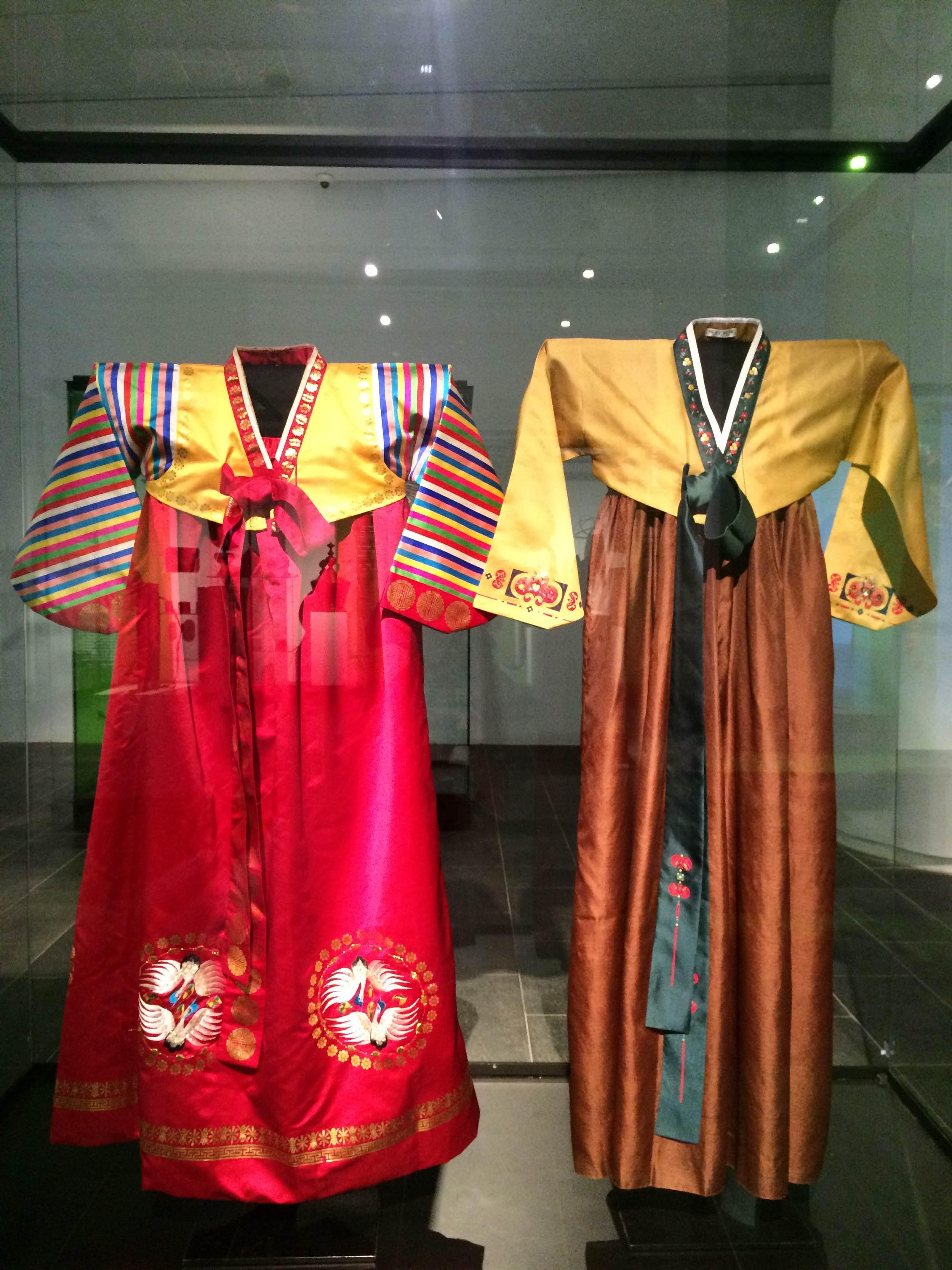

Appeared in the Three Kingdom Period (57 BC-668), hanbok served as a window into the Korean social structure and traditions. The dragon motif was decorated on hanbok worn by kings; wealth and privilege were represented by the peony flower. Hanbok with purple ribbons were worn by married women whose husbands were still alive; whereas dark blue cuffs on the sleeves showed that the woman had sons. Noble hanbok was made of silk and ramie while common people wore linen or cotton hanbok.
Hanbok appeared in a variety of forms: daily clothing, ritual attires, and special costumes for shaman and officials. The traditional-style hanbok worn today is patterned after the ones worn during the Joseon Dynasty (1392-1910). Nowadays, hanbok is the ceremonial dress worn in weddings, funerals and festivals of Korea.
